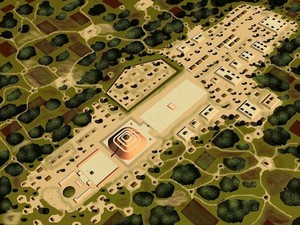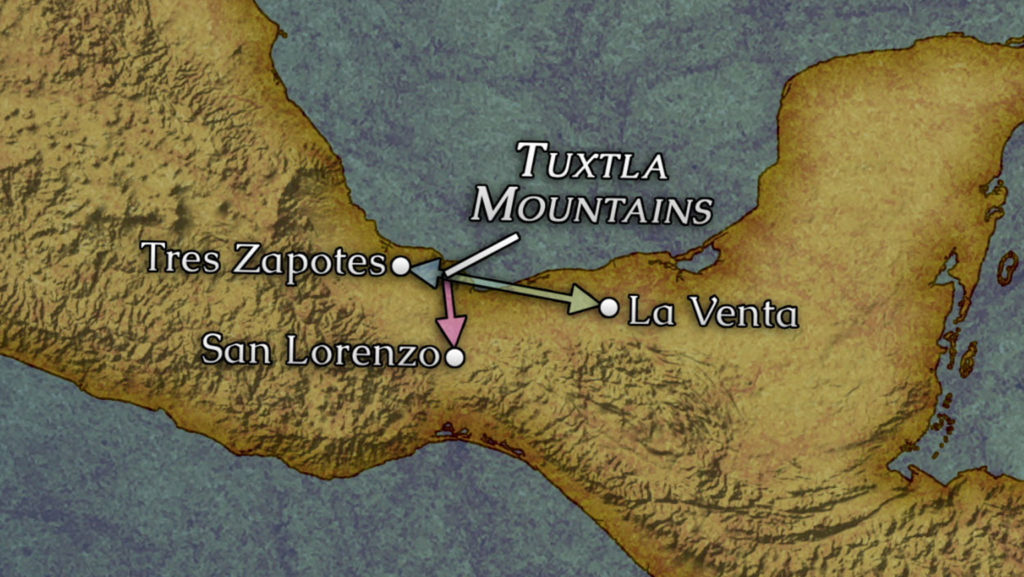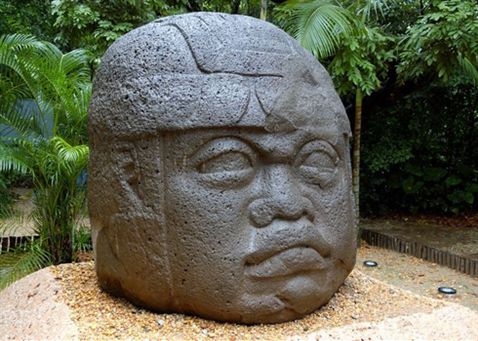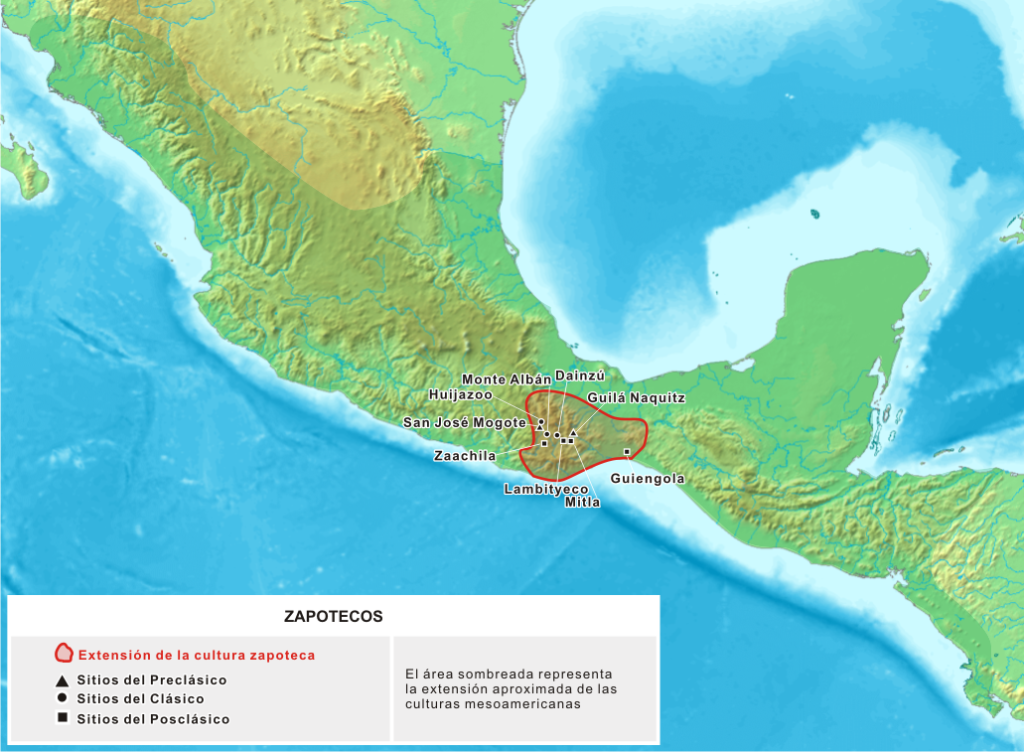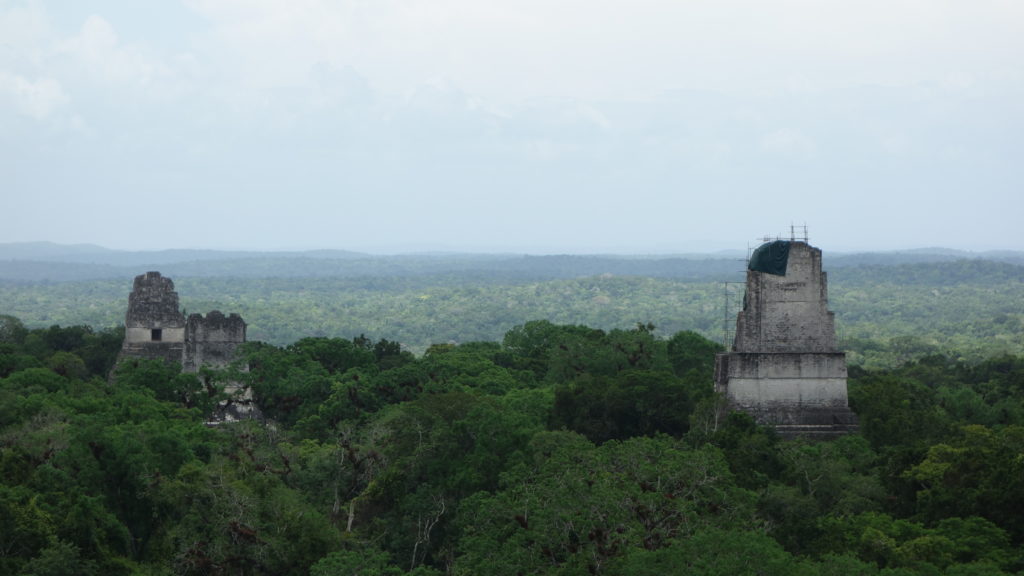Artists Idea Of La Venta
The names of those initial sites were Tes Zapotes, Laguna de los Cerros, San Lorenzo and La Venta which are found in the Mexican provinces of Vera Cruz and Tabasco.
These people are credited for some of the influences on other civilizations around them, including the Maya with inventions such as:
The ballgame, arithmetic, calendar, monumental art, portable art (crocodilian images), motifs (such as: the flaming eyebrow, The U-element, Saint Andrews cross, and the Kan cross).
In the middle pre classic period people are really organizing more. Specialization starts in many areas such as priests, potters, toolmakers and an increase in trade and communication.
The Olmec people are suggested by archaeologists to be the first ‘established” civilization in America. These people developed in the Olmec heartland in Tabasco and Vera Cruz. The places they organized their entire civilization were swampy, muggy and tropical.
Olmec Basalt Head
The Zapotecs were the neighbors of the Olmec and they were developing together from 900BC to 400BC (early pre classic).
Archaeologists found the earliest example of a ball court and rubber ball-making paraphernalia in the year 1920.
San Lorenzo was the Olmec’s first large town (1400 -1300BC to 900BC), and then La Venta takes over from 700-400BC. It seems that some group attacked San Lorenzo for this shift to have occurred.
In as far as development, the Olmec made several key developments, as mentioned before, that influenced the Maya civilization. The Maya developed much of them far more than the original inventors could have imagined. For example, one of the first inscribed monuments which were dated at 31BC (Stela C) at Tres Zapotes. Certainly the Maya created many more of these with some of the most impressive artistry. None-the-less, the idea of the stelae may have been an Olmec development.
Whether the cultural characteristics and development of the Olmec diffused into the wider Maya area or not, it is appropriate to make note that these people organized themselves to development that eventually most of the Mesoamerican space might seem to adopt, even the great Maya civilization.
One Massive City Of The Ancient, Tikal
If you have any questions or comments, please feel free to contact us at info@ninebelize.com or at tourswithnine@gmail.com. Thanks for taking a look at our blogs.

